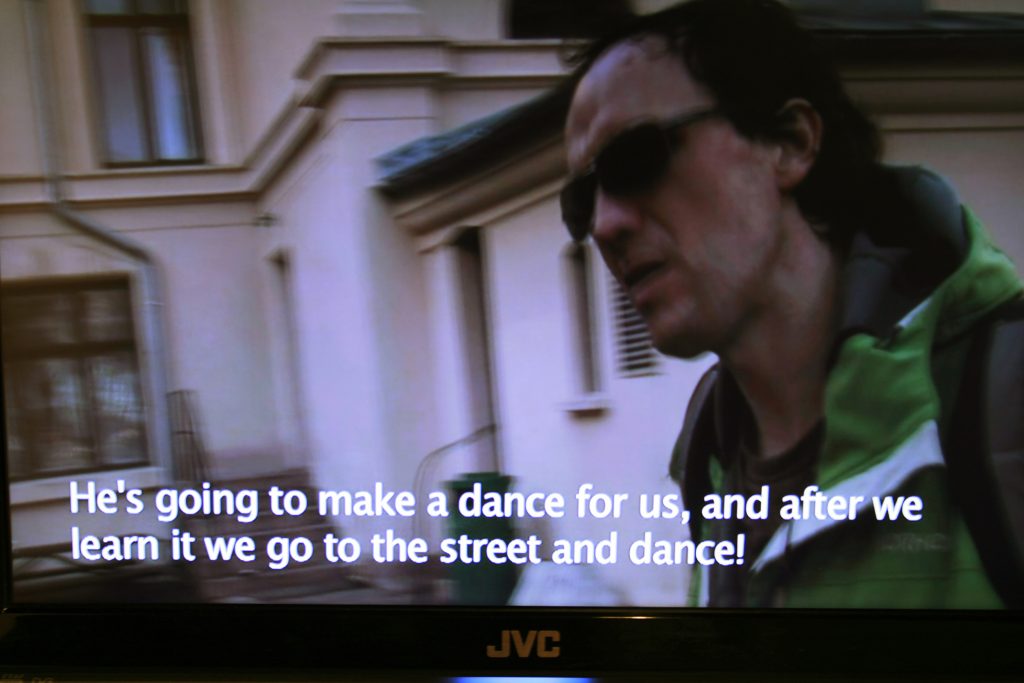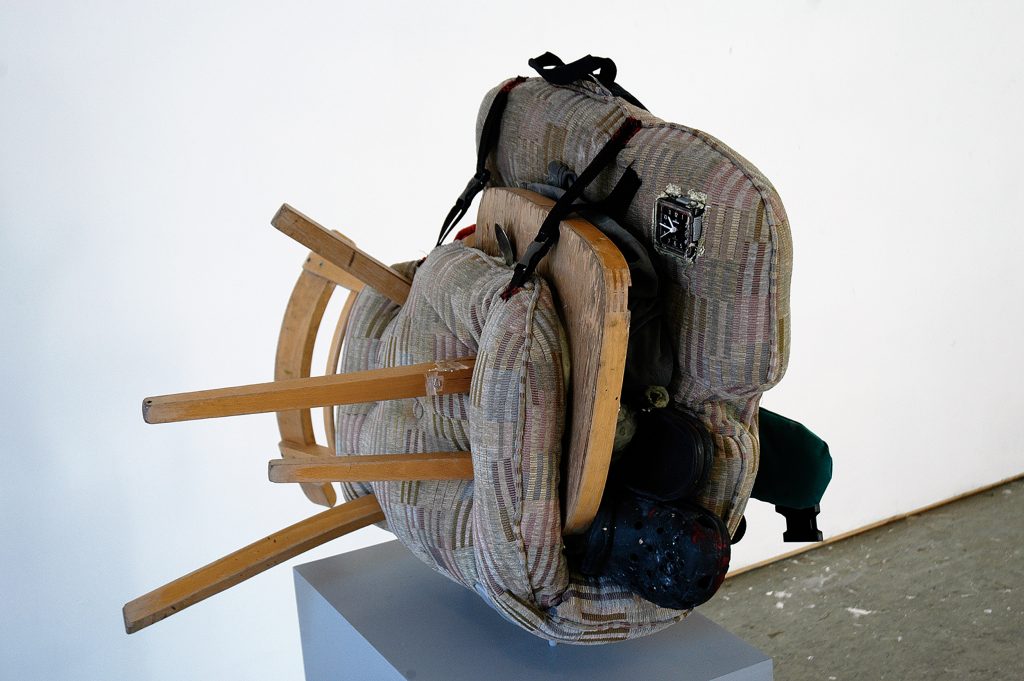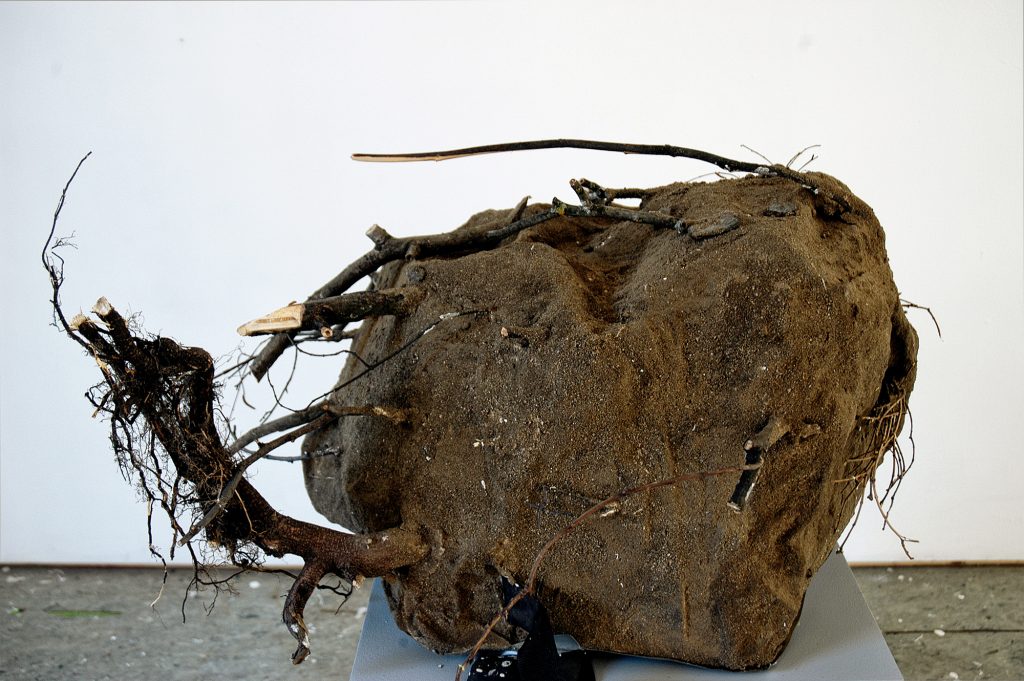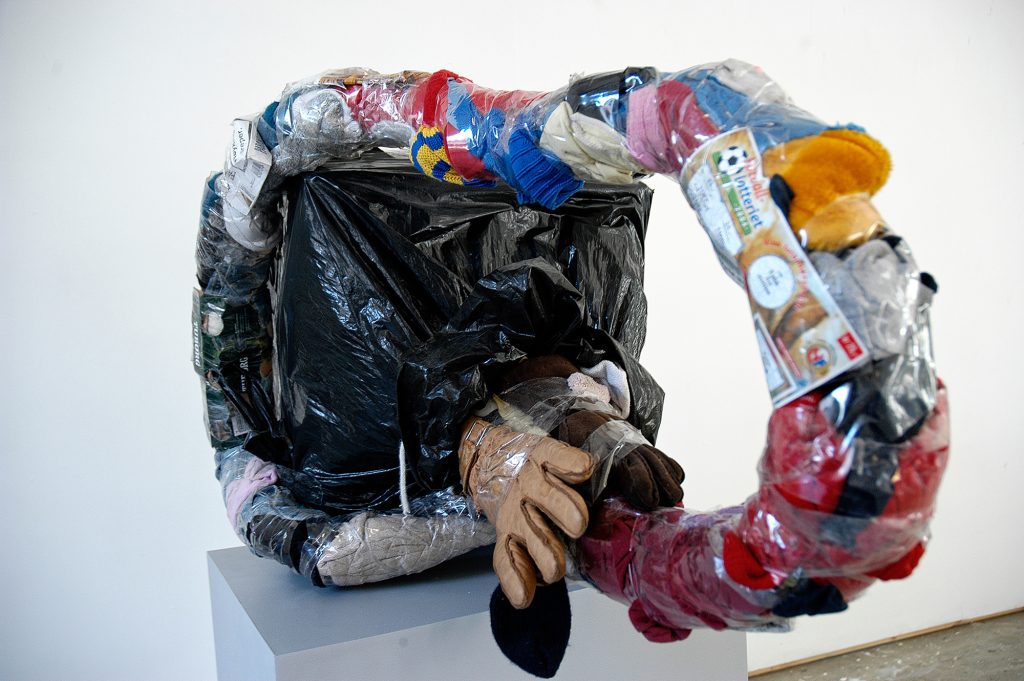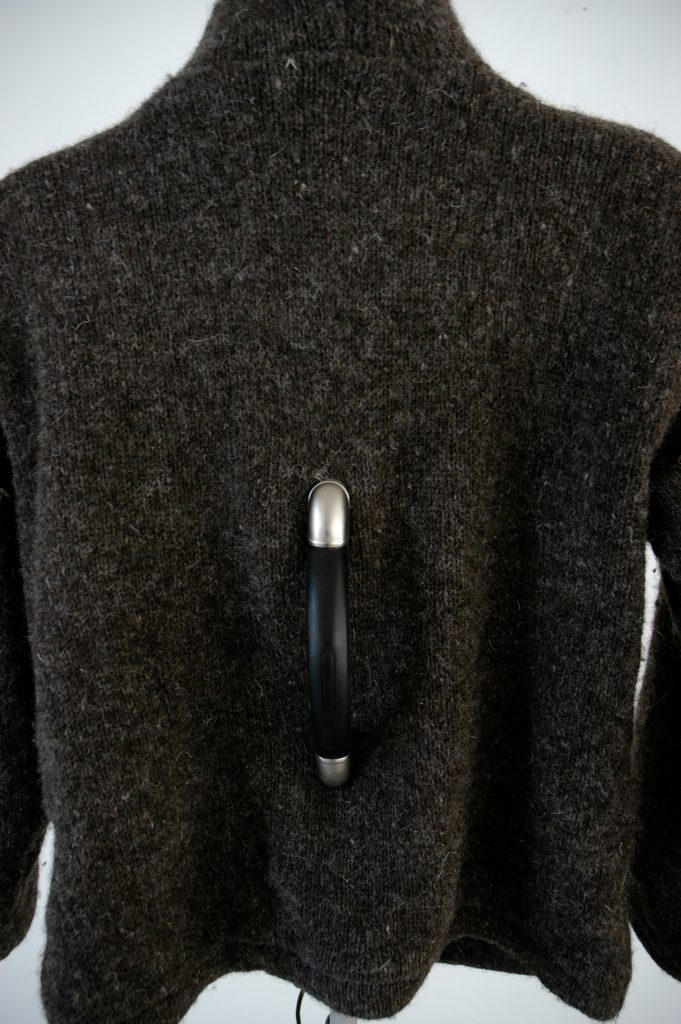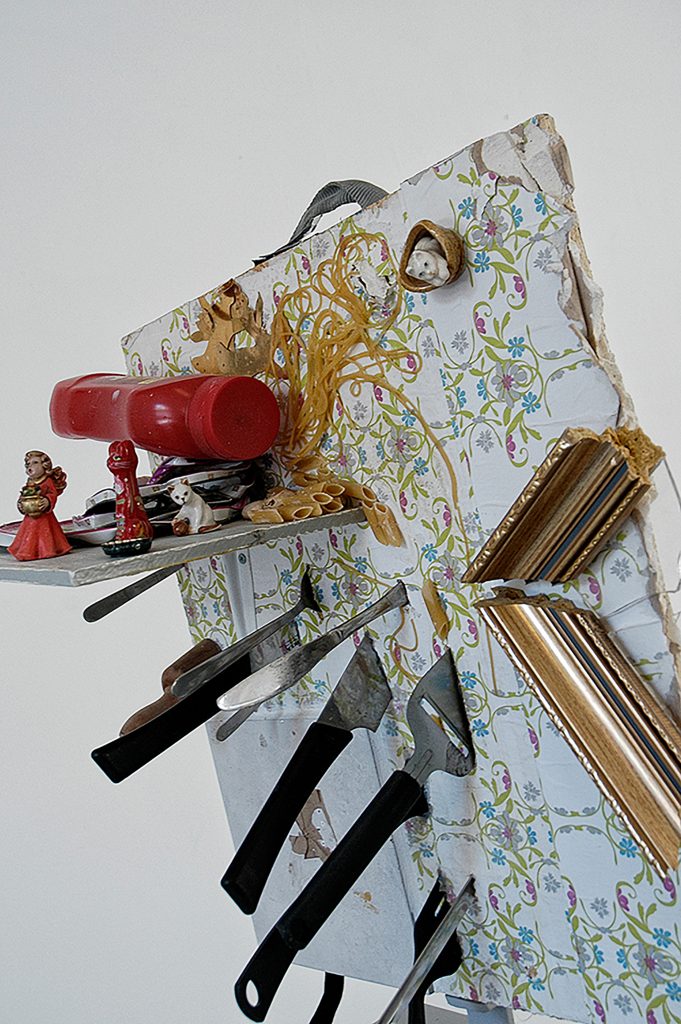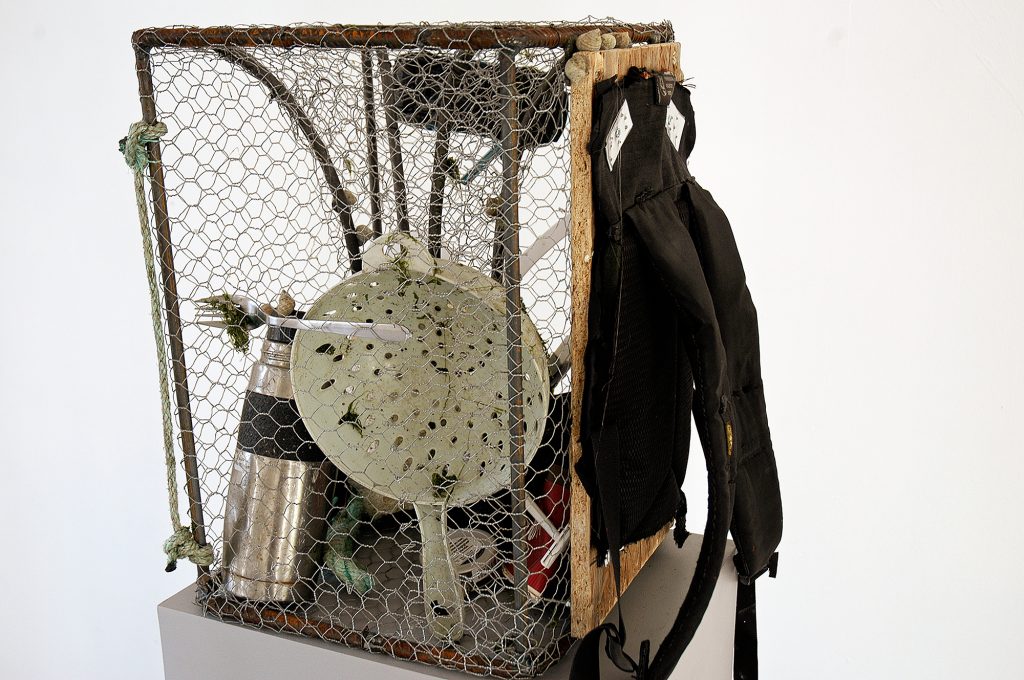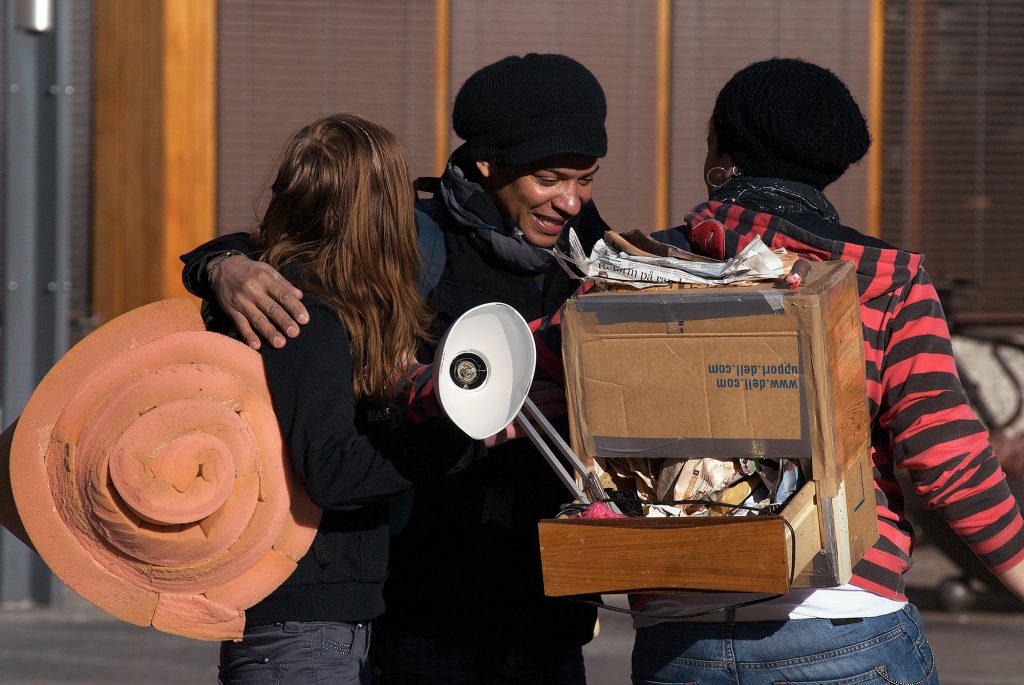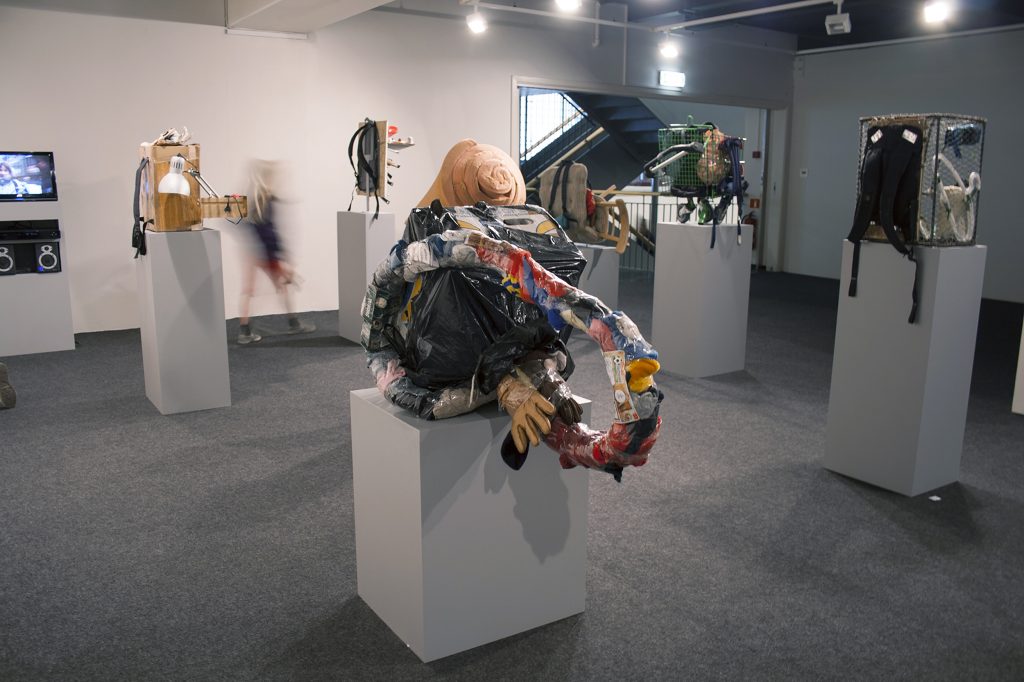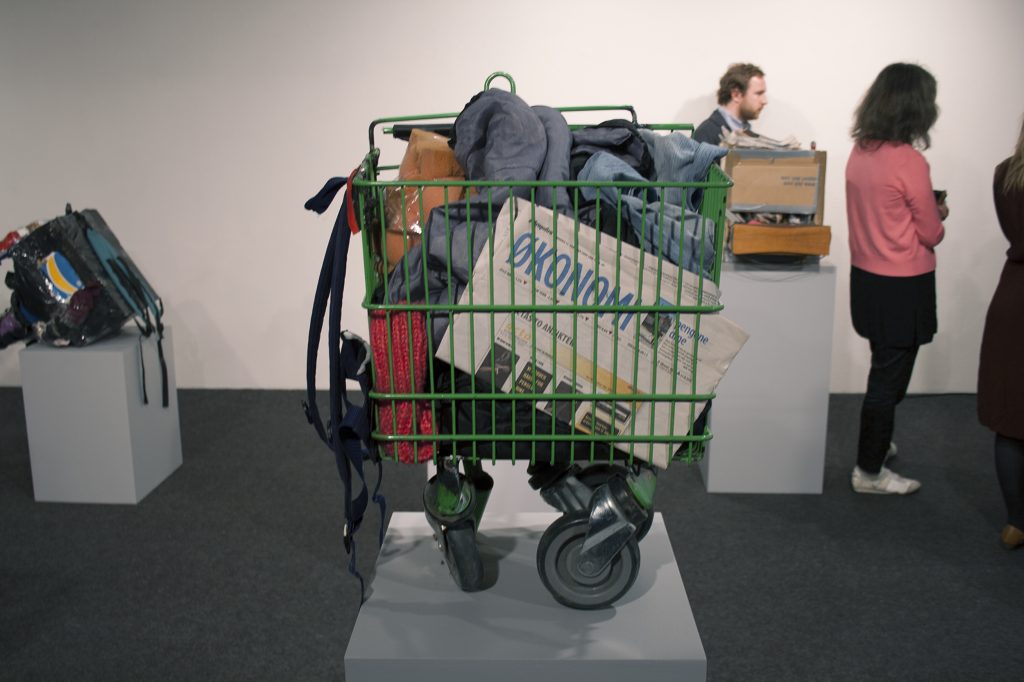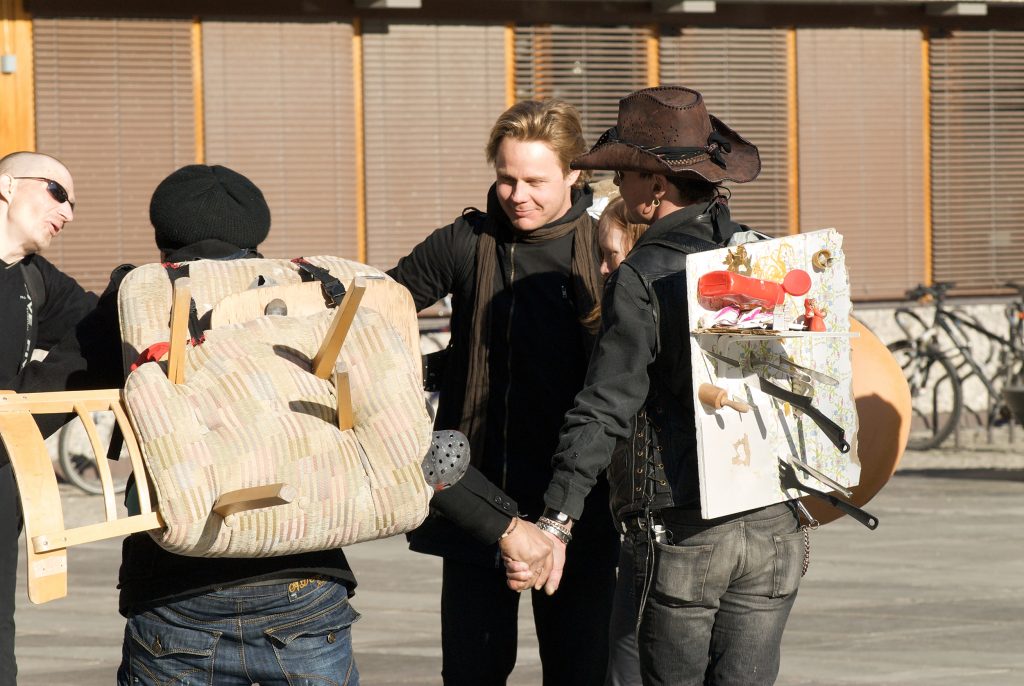Video/Installation 2009
Video duration 14 minutes
Dimensions variable
Image view: Stenersenmuseet, Oslo, Norway.
Photos by: Alejandro Perez and Juan Andrés Milanés Benito
This performance intervention took place in March 2009, in Oslo, Norway. For the title, I was inspired by a mathematical and physical principle that states: ‘the most far away point in relation to a point placed in real space would be the same point if we measure that distance in a straight line’.
I have applied this principle to our social environment, daily life, natural disasters and different events taking place today as a consequence of humankind’s actions and attitudes. We have learned to discipline and standardize human emotions, an expression of the urgency with which we live in this postmodern age. Every day our consumerist society grows, it also creates a larger gap in wealth and inequality. What this makes clear is that society has started a journey of regression, emphasizing the notion of how far we are from true selves. We are the most far away point in relation to ourselves.
The persons known as ”homeless” have already been the subject in works of art, documentaries and other creative endeavors. But in most of these cases, I have felt that these homeless people have been treated with distance and coldness. My impression was that of a division, like a huge river, between the lives of these ”homeless people” and how they were portrayed by the artistic world through sculpture, documentary, videos, etc. So, I proposed to create a bridge, one that could join these two elements or banks of the river.
After establishing contact with many people ‘living on the streets’, finding out more about them and what their interests were, I was very surprised to discover a big difference between the “homeless” of Norway and those from some other parts of the world, such as Latin America. The education level of most of the Norwegian homeless persons I spoke with was unbelievably high; moreover, they had a wide cultural knowledge, many were able to speak two languages and in some cases, they had also attended university. Thus my question became: what are the shared characteristics of homeless persons all over the world?
One answer was the rejection of society, including social surroundings. So I started visiting “homeless people”, one by one, inviting them to play a scene from their lives: a real-life role (themselves) on a real stage (the street). It would be something like a theatrical play of real life.
My intention was to use locations in Oslo to develop this performance spaced with public movement, places where we normally see the “homeless”: the main train and bus stations, Karl Johans Gate, and Slottsparken. The idea was to use utopia and create a dance between them and me, based on the necessity and possibility each human being has to detach from their routine and social environment and gain new experiences. We would be playing a game with the public, giving them, metaphorically speaking, a greeting so they would give us back their attention, even if only momentarily. For me, a choreographed dance is a very simple and accurate way to enable a group of people to do something together, moving or developing an action at the same time.
Another main goal of the project was that it involved different types of people. Willingly, or unwittingly, we attempted to engage people who were simply passing by, intending that they would stop when the performance was taking place, thus becoming spectators. In addition, we relied
on voluntary collaboration from those who were part of the performance process, including the choreographer and modern dance professor, Juan Carlos Ortega, as well as Erlik Oslo Magazine, an institution that has vast experience of working with people living on the street or experiencing isolation from society.
For the development of the performance, I created ‘Backpacks’, which we had to wear while we were dancing. These ‘Backpacks’ created a visual analogy to the snail, the animal known for always carrying their house on their back.
The ’Backpacks’ were made from materials and elements I had found on the street over a 6-month period (the same time I also had lived on the street). Each backpack that I created was inspired by the personal life of one of the people taking part in the performance, like a self-portrait of their life. At the same time, I built a collage that resembles some of the objects you can find in a house: chairs, mattresses, clocks, ornamental plants, earth, clothes, shoes, cardboard boxes, newspapers, shopping trolleys, etc.
Beyond Oslo, I have plans to continue working with homeless people in other Scandinavian countries, including Sweden, Denmark and Finland. The project will ultimately finish with a video documentation of performances made in all these different countries (including Norway).
